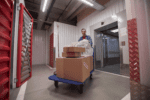Hurricane season is here — and although fortunately up to now we have had fairly little activity, there is no reason to sit back. The National Oceanic and Atmospheric Administration (NOAA) has predicted a 60% chance of an above-normal season, with as many as 19 named storms and up to 10 hurricanes coming our way. To make matters even potentially worse is COVID-19. Community leaders and emergency workers are concerned that a wide-scale catastrophe can present greater logistical challenges as they respond to evacuations amid a pandemic, and recommend that families and individuals take action now to put storm preparedness and protection measures in place if they aren’t already.
We Know A Hurricane Is Coming
The bright spot is we typically know when a hurricane is planning to make landfall. Technology such as satellites, reconnaissance aircraft, ships, radar, and other land-based platforms used by the National Hurricane Center (NHC) make hurricane tracking and prediction relatively accurate. Those who live in hurricane-prone areas and outlying areas should be well prepared in advance and know what to do once the warnings begin to come through. Following are several preparation measures to take:
Individuals & Families: Get Ready
- Re-evaluate your household evacuation and sheltering plans, ensuring the practice of social distancing and other safety measures when enacting plans
- Prepare a 72-hour supply of emergency food, water, medicine and first-aid supplies
- Have your go-to kit ready, including items that can help protect you and others from COVID-19, such as hand sanitizer with at least 60% alcohol, bar or liquid soap, disinfectant wipes (if available) and face masks for each person
- Follow local officials’ guidance on evacuation, including recommendations to relocate to an inland shelter, including shelters for pets
- Keep track of weather alerts: National Weather Service cell phone alerts, NOAA Weather Radio, or (@NWS) Twitter
- Know where you’re going ahead of time if you can’t shelter in place as social-distancing needs will make evacuation and relief efforts more difficult, including for families and friends looking to shelter together; additionally, hotels may be more difficult to book as many are still not fully operational
- If you plan on sheltering with a family outside of your household, consider if either of your households has someone who is at higher risk of developing a severe illness from COVID-19, including older adults or people of any age who have underlying medical conditions; the elderly and immune-compromised should be separated as much as possible and housed in smaller facilities to reduce their risk of catching the virus
- Follow safety precautions when using transportation to evacuate, which have been provided by the CDC
- When checking on neighbors and friends, be sure to follow social-distancing recommendations (staying at least 6 feet from others) and other CDC recommendations to protect yourself and others
- Mitigate property damage to your home by securing any large items and sealing any openings to prevent water damage; walk around the property to search for any potential issues, such as weak trees and branches that could fall and damage the house; install shutters to protect windows and glass doors from breaking
- After the hurricane has passed, take measures to prevent carbon monoxide poisoning if you use a generator
Businesses: Ensure Your Disaster Plan Is Updated
According to the U.S. Census Bureau, of the 7.8 million employer businesses in the U.S., 2.5 million are located in coastline counties. These businesses employed 37.1 million workers (28.9% of the national total), who earned $2.3 trillion in annual payroll in 2017. It’s critical that employers implement the steps necessary in updating their disaster plans, including taking into account the implications of COVID-19 for both remote workers and employees at the business location. Employers need to address the following and update their plans accordingly:
- Have procedures in place to communicate with employees working from home in the path of a hurricane to ensure their safety and to receive regular check-ins from them
- Implement a back-up plan if possible for employees whose homes are impacted by the storm to continue to work
- Plan for a power or Internet outage at your employees’ homes
- Establish a communication plan for office/location closures and openings
- Prepare a location or backup plan for temporary workspace; ensure this new temporary space allows for social distancing
- Include in your plan additional sources for suppliers or partners if current suppliers or partners in the area are impacted by the storm; ensure all suppliers and partners are taking COVID-19 safety measures
- Have a dedicated partner with access to power generators as they become scarce amid hurricanes and other disruptions
The threat of hurricanes combined with coronavirus is a recipe for disaster without the proper planning. Take action now to ensure your family’s safety as well as that of your employees.





